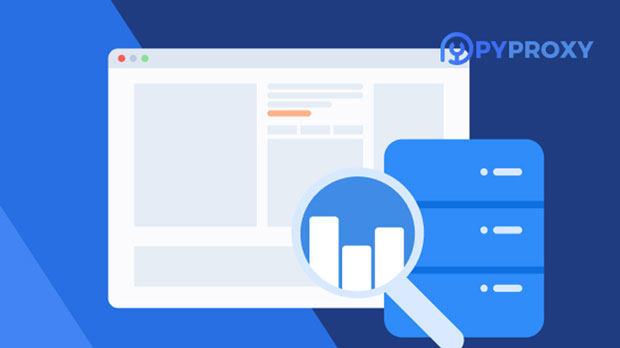How to get Socks5 proxy from third party proxy sites?
When searching for a reliable socks5 proxy, third-party proxy websites can be an effective option. These websites offer various proxy services, including socks5 proxies, which are known for their reliability, security, and anonymity features. The process of acquiring a Socks5 proxy through these platforms involves several key steps, such as selecting a trusted provider, understanding the payment and subscription models, and setting up the proxy on your device. This guide will walk you through the process of obtaining a Socks5 proxy from third-party proxy websites, providing you with practical insights into how to make an informed choice and ensure a smooth setup. Understanding Socks5 Proxy: An OverviewBefore diving into the process of acquiring a Socks5 proxy, it is important to understand what a Socks5 proxy is and how it differs from other types of proxies. Socks5 is a versatile and secure proxy protocol that offers a high level of anonymity by masking your IP address. It works at a lower level in the OSI model, ensuring that it can handle a wide range of internet traffic, including HTTP, FTP, and even P2P protocols.Unlike other proxies, such as HTTP proxies, Socks5 proxies do not modify the traffic at the application layer, making them ideal for more complex tasks such as torrenting, gaming, and accessing restricted content. Because of its versatility, security, and flexibility, Socks5 is often the preferred choice for users who value privacy and want to avoid potential interference with their online activities.Why Choose Third-Party Proxy Websites for Socks5 Proxies?Third-party proxy websites serve as intermediaries between users and proxy providers, offering an easy way to find and purchase Socks5 proxies. These platforms typically have a range of proxies available for different needs, including both private and shared Socks5 proxies. Using these websites allows users to compare various offerings, read reviews, and choose the most suitable option based on their specific requirements.Moreover, third-party proxy websites often provide more detailed information about the proxies available, such as geographic location, speed, and security features, which can help users make a more informed decision. Since these platforms aggregate services from multiple providers, they can also offer competitive pricing and special deals, which can be beneficial for those looking to save money while still obtaining reliable proxy services.Steps to Obtain Socks5 Proxies from Third-Party WebsitesThe process of obtaining a Socks5 proxy from a third-party website typically involves the following steps:1. Research and Select a Trusted Third-Party Proxy Website The first step is to identify a reputable third-party proxy website. While many options are available, it is crucial to find one that has a good track record and offers transparent information about its proxy services. Read user reviews and verify the platform's legitimacy through various online forums and trusted sources. Look for clear terms of service, privacy policies, and customer support channels to ensure that the website is trustworthy.2. Review Available Socks5 Proxy Options Once you’ve selected a platform, the next step is to explore the available Socks5 proxies. Most third-party websites allow users to filter proxies based on specific criteria such as country, connection speed, and security features. Pay attention to the following factors when reviewing proxies: - Speed and Bandwidth: A reliable proxy should offer sufficient speed for your needs. If you're using the proxy for streaming or gaming, for example, opt for one with high bandwidth and low latency. - Location: Consider whether the proxy’s location aligns with your objectives. Some websites offer proxies in specific countries to help you access geo-restricted content. - Security: Ensure that the proxy service supports encryption and is resistant to common security vulnerabilities. Most third-party proxy websites provide this information in a user-friendly format, allowing you to easily compare multiple options before making a choice.3. Check Payment and Subscription Plans Many third-party proxy websites offer different payment plans depending on your needs. Some proxies are available on a pay-per-use basis, while others require monthly or annual subscriptions. It's important to choose a plan that aligns with your expected usage and budget. - Free Trials: Some websites offer free trials or limited-time access to Socks5 proxies, which can be a great way to test the service before committing to a paid plan. - Pricing: Be cautious of deals that seem too good to be true. Cheap proxies may compromise on speed, reliability, or security, so it's important to balance cost with quality.4. Place Your Order and Complete the Payment After selecting the appropriate Socks5 proxy, you will need to proceed with the payment. Most third-party websites accept various payment methods such as credit cards, PayPal, and cryptocurrency. Make sure the payment process is secure and that you receive a confirmation once the transaction is complete. Once the payment is processed, you will typically receive the proxy details, including the IP address, port number, and any authentication credentials required for setup.5. Configure the Socks5 Proxy on Your Device After purchasing the proxy, you need to configure it on your device. This typically involves entering the provided IP address and port number into the proxy settings of your browser, operating system, or application. Follow the instructions provided by the third-party website to ensure that the setup is done correctly. - For Web Browsers: Most modern browsers like Google Chrome, Mozilla Firefox, and Microsoft Edge have built-in proxy settings where you can input your Socks5 proxy details. - For Applications: If you're using the proxy for a specific application, such as a torrent client or gaming platform, refer to the application's documentation for detailed configuration instructions. Some websites also provide a test option, allowing you to verify the connection before starting your online activities. Ensure that everything is functioning properly by testing the proxy with a few basic internet tasks.Common Issues and TroubleshootingWhile obtaining and setting up Socks5 proxies from third-party websites is generally straightforward, you may encounter some common issues. Here are a few tips for troubleshooting:- Connection Issues: If you can’t connect to the proxy, double-check the IP address and port number you entered. Ensure that the proxy server is online and operational. Some proxies may require additional configuration, such as authentication or specific software.- Slow Speed: If your proxy is slow, it may be due to server congestion or the distance between you and the proxy server. Try selecting a different proxy server closer to your location or upgrade to a higher-tier plan with better performance.- Security Concerns: If you're concerned about the security of your proxy, consider switching to a more secure provider or upgrading your encryption settings.ConclusionAcquiring a Socks5 proxy from a third-party proxy website can provide you with a flexible and secure solution for enhancing your online privacy and accessing restricted content. By following the outlined steps—researching reputable providers, reviewing available proxy options, understanding payment plans, and configuring your proxy correctly—you can ensure a smooth and successful experience. Always keep in mind that reliability, speed, and security should be your top priorities when selecting a proxy service. With the right approach, you can make the most of the benefits that Socks5 proxies have to offer.
2025-01-10
























































